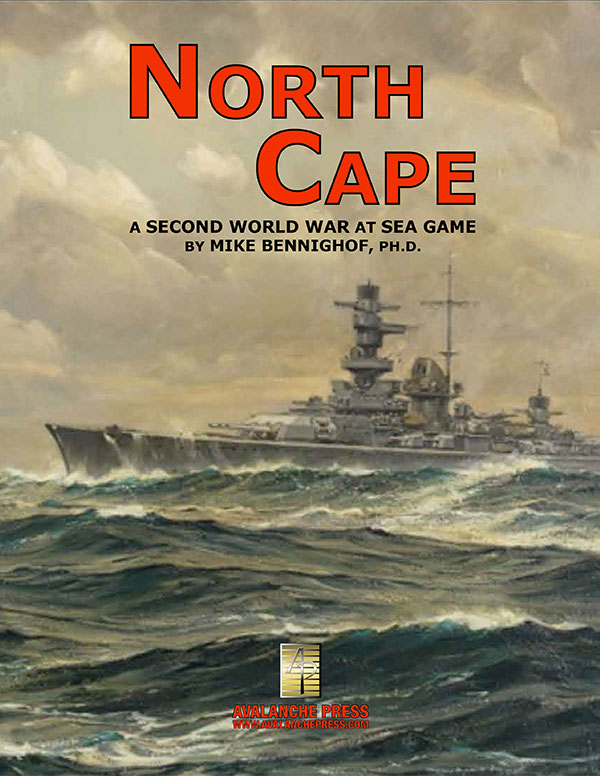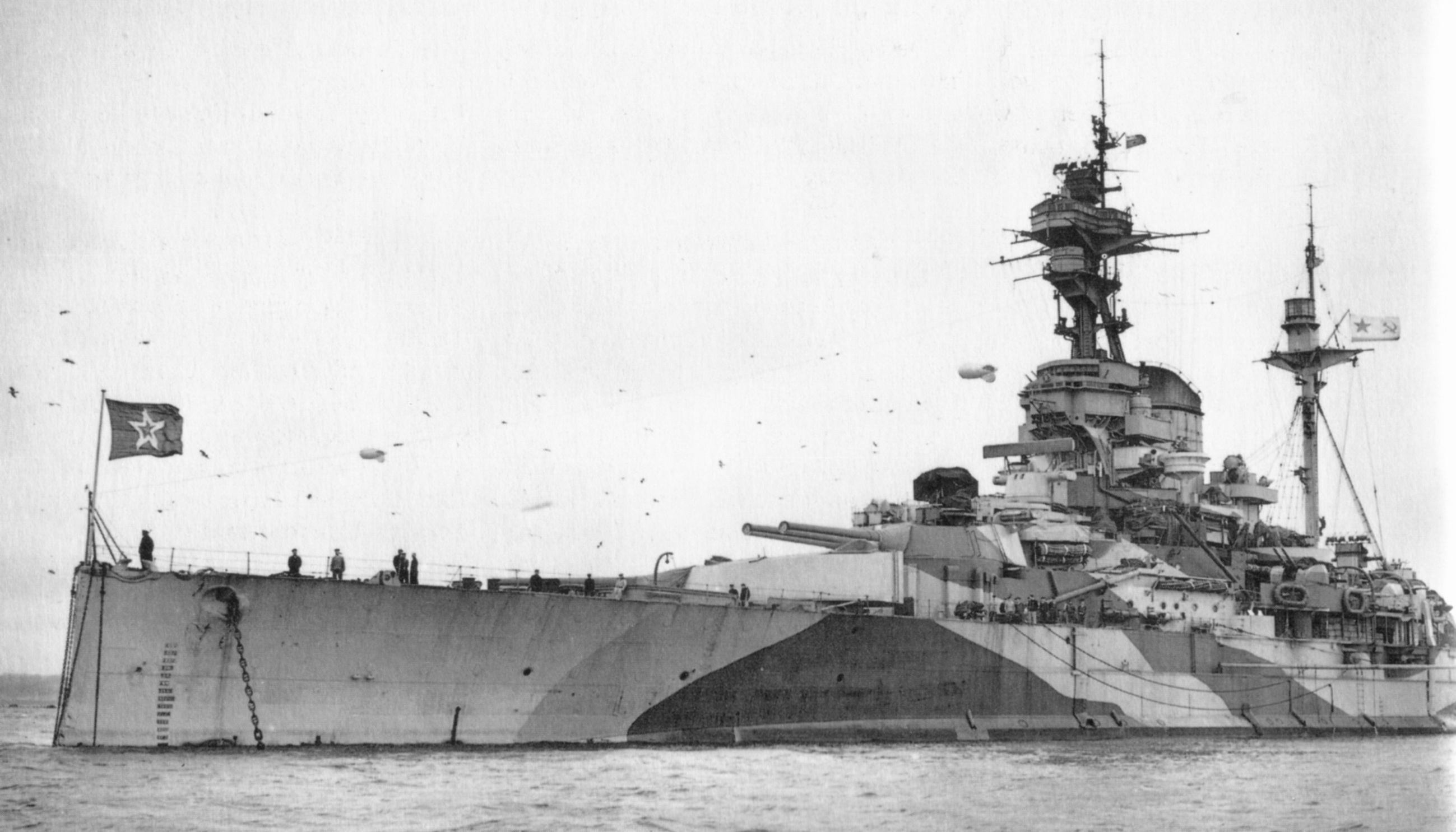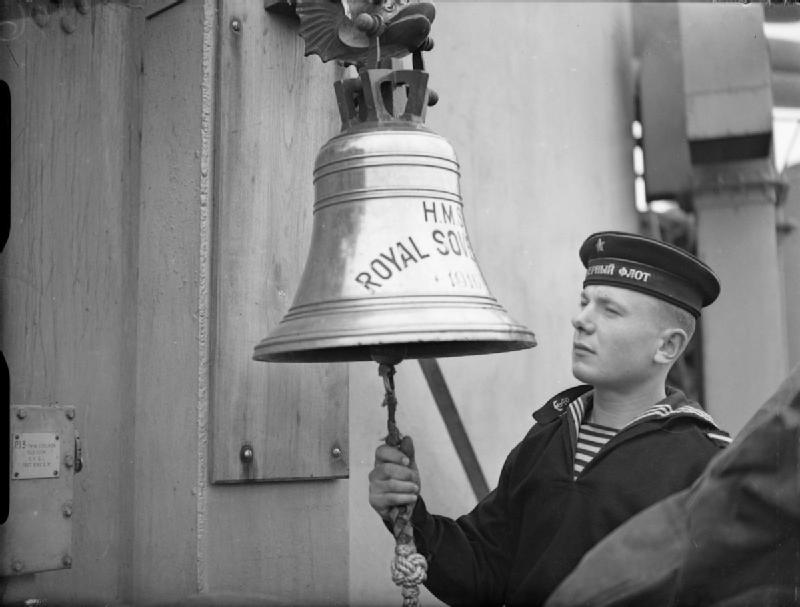| North Cape, Chapter Six:
The War’s Last Year
By Mike Bennighof, Ph.D.
February 2025
 Adolf Hitler’s Twelve-Year Reich ended with a whimper. His fleets and armies destroyed, his last active choice to take a bullet over a cyanide capsule. A record of miserable failure ended in a ditch outside his final bunker. Adolf Hitler’s Twelve-Year Reich ended with a whimper. His fleets and armies destroyed, his last active choice to take a bullet over a cyanide capsule. A record of miserable failure ended in a ditch outside his final bunker.
By 1944, the German fleet in northern Norway wasn’t in much better shape. The small battleship Scharnhorst had been lost at the end of 1943, having inflicted no damage on the Allied convoy she fruitlessly sought. The larger battleship Tirpitz had been damaged by a mini-submarine attack in September 1943 and remained under repair until April 1944. She would continue to attract British obsession until Royal Air Force bombers dropping 12,000-pound “earthquake” bombs finally wrecked her in November 1944.
Once the Red Army reached the coast of the Baltic Sea in the summer of 1944 and more fighting took place within range of the sea, the cruisers that had been stationed in Norway returned home to support the defenders with their gunfire. That left the German command in northern Norway with the possible aid of a powerful battleship, and a handful of destroyers, themselves in need of frequent maintenance (a combination of poor design and heavy wear).
The convoys to northern Russia continued, as despite their battlefield successes the Soviets still needed the weapons, industrial goods, and raw materials from the West. Politically, the Western powers saw the need to stake at least a small claim to the Red Army’s pending victory. But now the Germans had far less ability to interdict the flow; they had lost many of the submarines and aircraft, while Allied (chiefly British) strength had only grown.
And so, the sixth and final chapter of Second World War at Sea: North Cape is one of the shortest, with just six scenarios: three operational scenarios (the ones that take place on the map of the Arctic Ocean) and three matching battle scenarios (skipping right to the shooting part).

With the u-boats having lost the Battle of the Atlantic, Allied anti-submarine forces pressed their sweeps ever closer to German-controlled shores as they sought to finish off the submarines close to their bases. The German destroyers sortied to fight them several times; Hitler did not care about destroyers, and so the German naval command didn’t need his permission to use them at sea.
We have two pairs of scenarios (each of one operational and one battle scenario) based on these efforts. The Germans often sport bigger guns with longer range, which can be very useful, except that the British destroyers they face have more guns, even if they are smaller. While the Weimar Navy built very conservative destroyers (which they called torpedo boats), under the Nazi regime the Navy catered to Hitler’s penchant for giantism. The later German destroyers weighed in at twice the displacement of the pre-war British designs, and 25 percent larger than the more recent British boats. They carried 150mm (5.9-inch) guns, the same model KC/36 that would have armed the cancelled M-class light cruisers of the Z-Plan; the British boats had 4.7-inch or 4-inch guns.
Those were the advantages on paper. They broke down regularly, and of course their crews had far less opportunity to maintain readiness than did their British opponents. Second World War at Sea can reflect crew quality, but the mission-availability issue is understated in the game. The Germans had the option to simply not go to sea if their ships were not ready, and very often they allowed the Allied convoys to pass by unmolested for this very reason. And when they did sortie anyway, the defective ship simply doesn’t appear in the scenario.

Arkhangel’sk, just after handover at Scapa Flow. 30 May 1944.
The destroyer scenarios are small, but evenly matched; the Royal Navy still, after five years of war, too often assigned just enough force to match the enemy, but not enough to overwhelm him. American practice would have simply swamped the Germans with more firepower and hulls than they could hope to match.
The final scenarios of North Cape feature the Soviet Arctic Fleet’s lone battleship. The Soviets had been promised a share of the surrendered Italian fleet, but the ships were still in possession of their Italian crews, at the British base at Malta. The American and British governments worried that they would scuttle them rather than hand them over if they learned that the ships would be transferred to the Soviets. To mollify their allies, the British turned over the aged battleship Royal Sovereign, which the Soviets re-named Arkhangel’sk.
As part of Convoy JW.59 for her initial voyage to the Soviet Union, Arkhangel’sk steamed through what had once been a gauntlet of German opposition. But at this particular moment (August 1944), Tirpitz was actually fit for action, one of the few such opportunities in 1944 when the Germans had their own battleship operational and an Allied convoy was sailing past. The Germans did not chase the convoy; if they had, they would have found a Soviet battleship among her close escorts on top of the usual corvettes and escort destroyers. You get to play this out in the game, because you can’t pass up the chance to fight with a Soviet battleship.

A Soviet sailor sounds the bell of Arkhangel’sk (ex-Royal Sovereign).
By this point, Tirpitz had little value as a “fleet in being,” given German reluctance to use her. Arkhangel’sk was treated as a first-line unit by the Soviets and sortied to meet incoming convoys after her arrival at Murmansk. But she was beyond decrepit: she had no working heat in her crew spaces (a definite problem in Arctic conditions), her main armament often froze, and her sewage system had broken down to the point where it deposited the sailors’ shit in the bilges (upon her return to the Royal Navy, the British would accuse the Soviets of deliberately wrecking the pipes). So we wrap up the game with the opportunity to fight with or against a literally shitty battleship.
And that ends the game’s 52 scenarios. North Cape has more than the usual Second World War at Sea game (though all of them have a great many); I felt it worthwhile to include a larger scenario set because of the unusual nature of the campaign. It played out very differently at different stages, as I hope these previews have made clear.
If you’ve read this far, I don’t have to hope you’ll enjoy North Cape. I know you will.
You can order North Cape right here.
Sign up for our newsletter right here. Your info will never be sold or transferred; we'll just use it to update you on new games and new offers.
Mike Bennighof is president of Avalanche Press and holds a doctorate in history from Emory University. A Fulbright Scholar and NASA Journalist in Space finalist, he has published a great many books, games and articles on historical subjects; people are saying that some of them are actually good.
He lives in Birmingham, Alabama with his wife and three children. He misses his lizard-hunting Iron Dog, Leopold.
Daily Content includes no AI-generated content or third-party ads. We work hard to keep it that way, and that’s a lot of work. You can help us keep things that way with your gift through this link right here.
|
